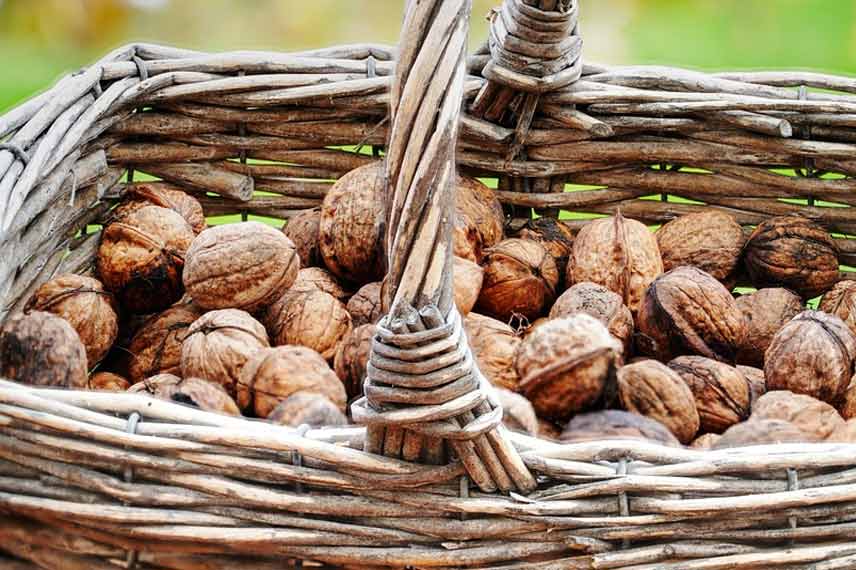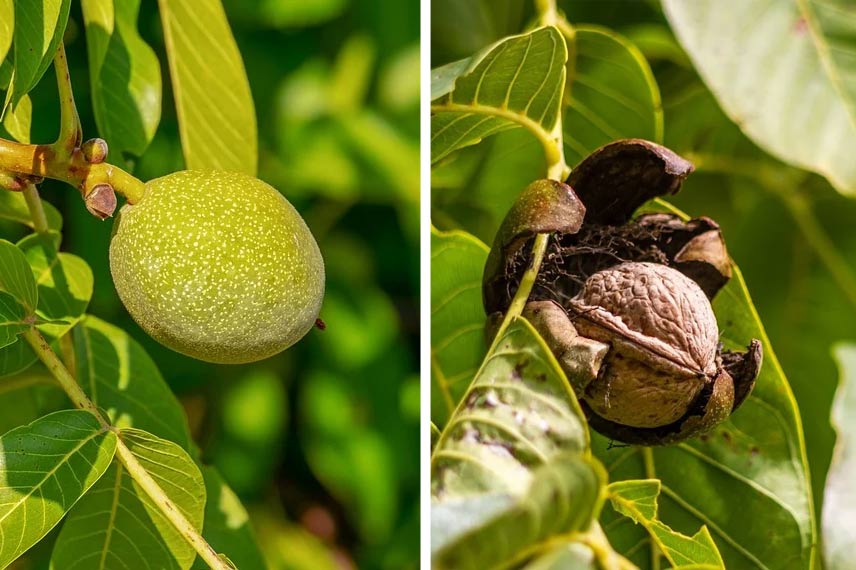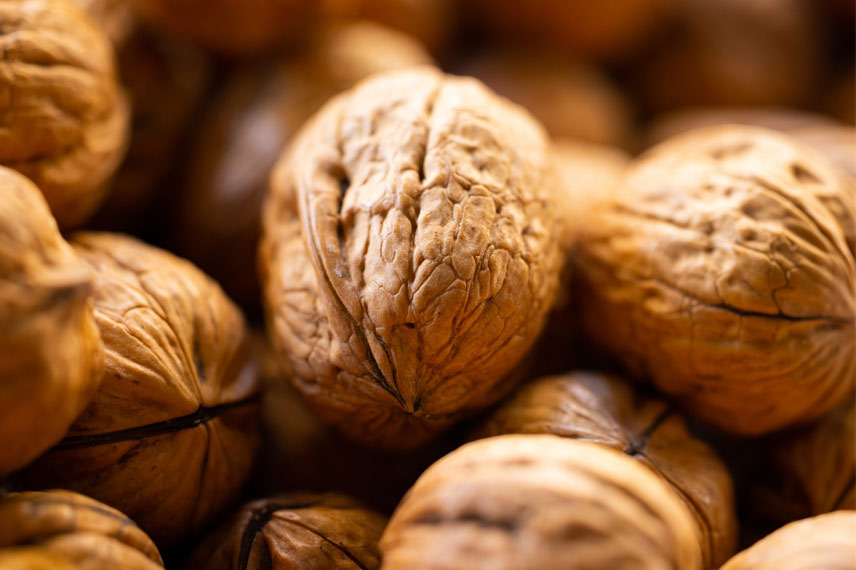Walnut tree, Juglans regia L., grows easily in our temperate climates. It is therefore common in gardens, appreciated for its majestic habit and its delicious oleaginous shell fruit: walnut.

Here are all our tips to harvest and store walnuts, so you can enjoy their benefits for several months!
Harvest walnuts: timing and method
When to harvest walnuts?
Green walnuts are harvested before ripeness, that is when the walnut is still at the embryo stage and the husk (its protective covering) forms a soft, closed shell around the fruit. Green walnuts are thus harvested at St John’s Day (24 June) in the south of France, and up to 22 July in the north, at St Mary Magdalene’s.

Mature walnuts are harvested when the husk turns from green to brown and splits, allowing the shell to open and the walnut to fall to the soil. Harvest therefore takes place over a relatively short period, from mid-September to the end of October, or even into November. Duration varies depending on year, region and variety.
How to harvest walnuts?
Once walnuts have fallen to the soil, simply bend down to pick them up. Be careful: walnuts should then be harvested as quickly as possible to limit time spent on the soil, thereby reducing risk of microbial contamination.
Storing walnuts after harvest
Fresh walnuts
Fresh walnuts still offer a tender flesh and a subtle, fresh, sweet and fruity aroma, completely different from texture and flavour of dry walnut kernels. They are eaten soon after picking because their shelf life is very short, between 24 and 48 hours.
- Start by removing remaining husk and clean the shells.
- Keep fruits intact in their shells and place them in the vegetable drawer of the refrigerator.
- Or, shell the fruits and put the kernels in an airtight container before chilling.
You can also freeze fresh walnuts to keep them longer. You can place fruits in the freezer with their shells on, or shell them and put kernels in an airtight container before freezing.
How to dry walnuts?
Drying walnuts allows keeping them for several months in a cool, dry place. To extend storage beyond a year, place them in an airtight container containing coarse salt. Layer walnuts alternately with coarse salt, and finish by replacing the container lid (pot, jar, etc.)
Note that before being left to dry, walnuts must be very clean. To do this:
- Spread walnuts in a dry, airy location to dry remaining husk. Walnuts should not be piled but placed side by side to ensure ventilation.
- Remove fully dried husks so only shells remain.
- Make sure to clean the walnuts using a small brush so no debris remains on the shell.

There are then three different methods to dry your walnuts.
Drying walnuts in a crate
- Place walnuts with their shells in crates, such as those used by greengrocers. Wooden wine boxes are also perfect for this use.
- Then place the crate outdoors for a few weeks, in a shaded spot well protected from bad weather.
Drying walnuts in a net
You can also dry walnuts in a large potato net.
- Fill it two-thirds full with walnuts, and suspend it outdoors.
- Again, the chosen location must be shaded and protected from moisture.
- You can also place the walnut net in a dry, airy garden shed.
- Remember to turn the walnuts from time to time in their net.
Drying walnuts in the sun
- Choose a well-sunny spot and lay a large sheet on the soil.
- Spread your walnuts on it, and leave them to dry for several days.
- Bring the walnuts in each evening, before humidity sets in.
Using walnuts after harvest
Walnuts are oleaginous shell fruits, very energy-rich and high in lipids. They are also a source of vitamins E, B3, B5 and B6, potassium, magnesium, phosphorus and fibre. Finally, their oil has a high content of polyunsaturated fatty acids.

In summary, walnut has recognised antioxidant properties. It is used notably to help reduce blood cholesterol levels.
Using green walnuts
Green walnuts offer a very particular flavour and are widely used in gastronomy. They are traditionally used for pickled walnuts, or to make walnut wine. They are also used to prepare jam, chutney and vinegar pickles.
Using fresh walnuts
Fresh walnut kernels can be eaten straight from the shell, but also in salad, or in sweet-and-savoury dishes.
Using dried walnuts
Dried walnuts are perhaps the most versatile, used in both savoury and sweet dishes.
- Dried walnuts are used to produce walnut oil. This is then kept in the refrigerator to prevent rancidity.
- Once shelled, kernels can be used to garnish various salads (endive, lettuce, lamb's lettuce, young spinach leaves...). They are used crushed in poultry stuffings, or to replace pine nuts in basil pesto. Walnut kernels are also perfect to accompany cheese.
- In sweet dishes, walnut is used to prepare various cakes, muffins, puddings, muesli, etc.































Comments